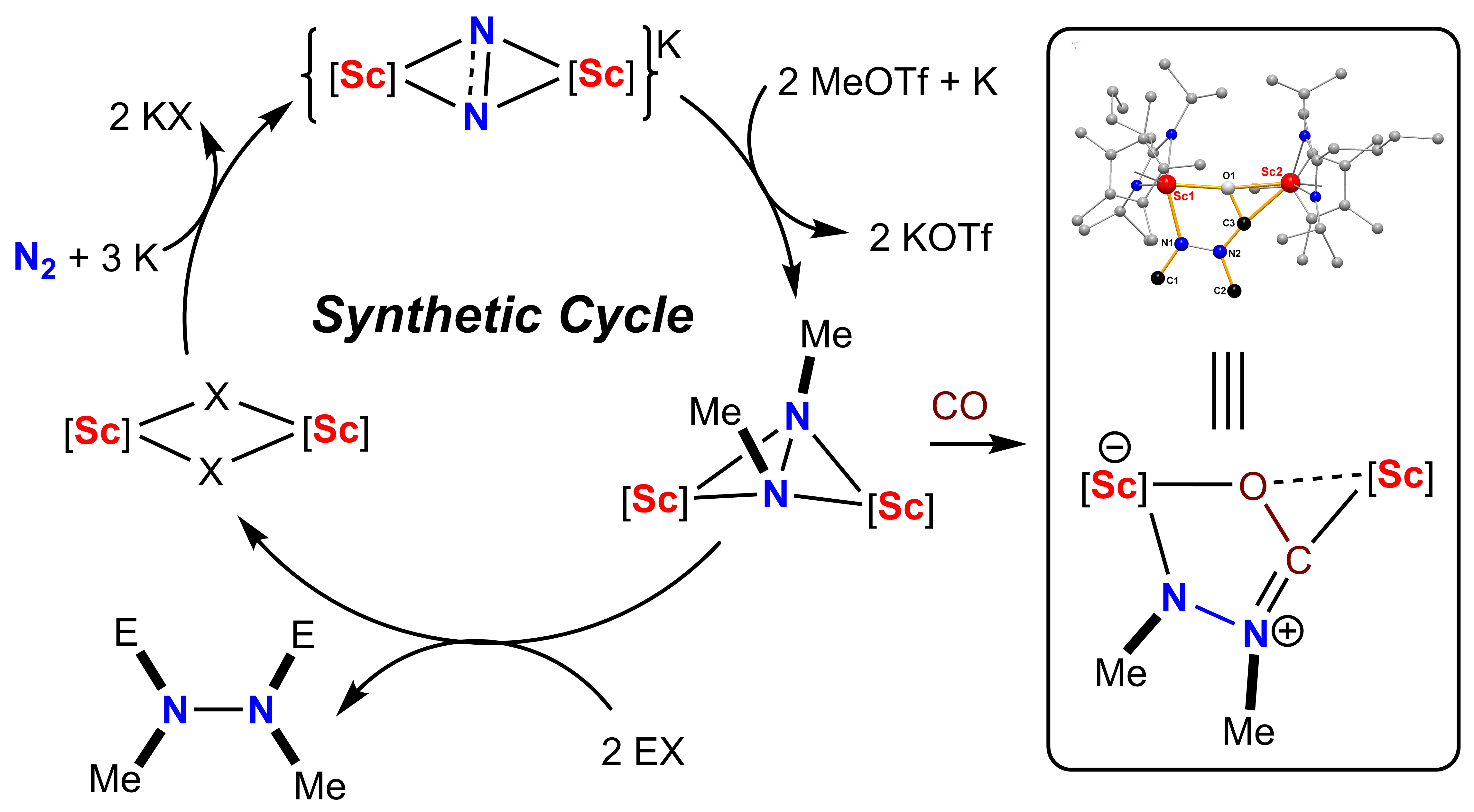研究室工作进展 Jun. 11th, 2019
Scandium-Promoted Direct Conversion of Dinitrogen into
Hydrazine Derivatives via N−C Bond Formation
Ze-Jie Lv, Zhe Huang, Wen-Xiong Zhang,* and Zhenfeng Xi*
J. Am. Chem. Soc. 2019 , 141, 8773−8777.

Most N-containing organic compounds are currently synthesized through ammonia (NH3), the product of the Haber−Bosch process that converts N2 and H2 to NH3 using metal catalysts under high temperature and pressure. Direct conversion of N2 into high-value N-containing organic compounds, not through NH3, is of great significance and challenging both fundamentally and practically. Although some progress in making C−N bonds through N2 –metal complexes and carbon-based reagents have been reported in the literature, such an approach is still in its infancy. In this work we report a highly efficient scandium-mediated synthetic cycle affording hydrazine derivatives (RMeN−NMeR’) directly from N2 and carbon-based electrophiles. The cycle includes three main steps: (i) reduction of a halogen-bridged discandium complex under N2 leading to a (N2)3− -bridged discandium complex via a (N2)2− intermediate; (ii) treatment of the (N2)3− complex with methyl triflate (MeOTf), affording a (N2Me2)2− -bridged discandium complex; and (iii) further reaction of the (N2Me2)2− complex with the carbon-based electrophile, producing the hydrazine derivative and regenerating the halide precursor. Furthermore, insertion of a CO molecule into one Sc−N bond in the (N2Me2)2− −scandium complex was observed. Most notably, this is the first example of rare-earth metal-promoted direct conversion of N2 to organic compounds; the formation of C−N bonds by the reaction of these (N2)3− and (N2Me2)2− complexes with electrophiles represents the first case among all N2−metal complexes reported.
目前几乎所有人工合成的含氮有机化合物都是基于合成氨。而传统的工业合成氨(NH3)过程 (Haber-Bosch Process)条件极其苛刻,据推算年耗能占全球能耗的2%左右,消耗约25%的化石资源,产生大量温室气体。因此,将氮气直接转化为含氮有机化合物,而不经过NH3, 是解决以上问题的重要途径之一(见中文综述:从氮气直接合成含氮有机化合物,李嘉鹏 殷剑昊 俞超 张文雄 席振峰,化学学报2017, 75, 733-743)。但相关文献报道很少, 催化反应体系还没有实现。
本工作报道了稀土金属钪促进的直接由氮气、MeOTf和亲电试剂等有机底物反应高效合成肼衍生物的过程,分离和表征了(N2)2−-, (N2)3−-和(N2Me2)2−-Sc中间体,并发现CO能有效插入(N2Me2)2−-Sc中间体的Sc−N键中,实现了N2与CO的高效偶联。
本工作首次实现了稀土金属促进的从氮气直接合成含氮有机化合物,并为四取代和15N标记的肼衍生物的制备提供了新方法。将该计量反应转化为催化过程是我们的下一个重要研究目标。
